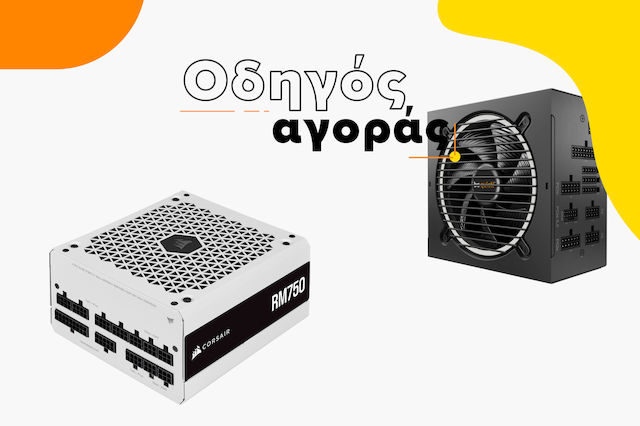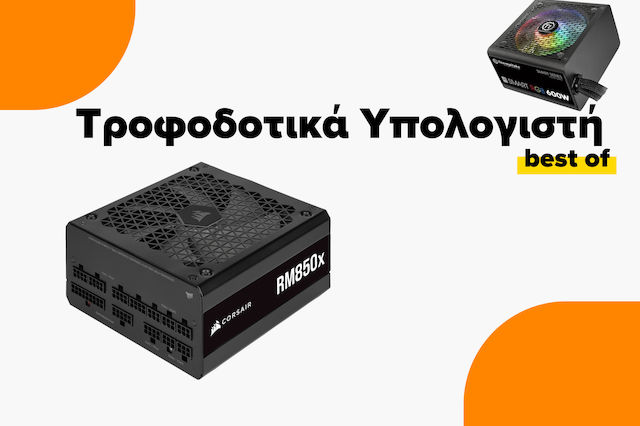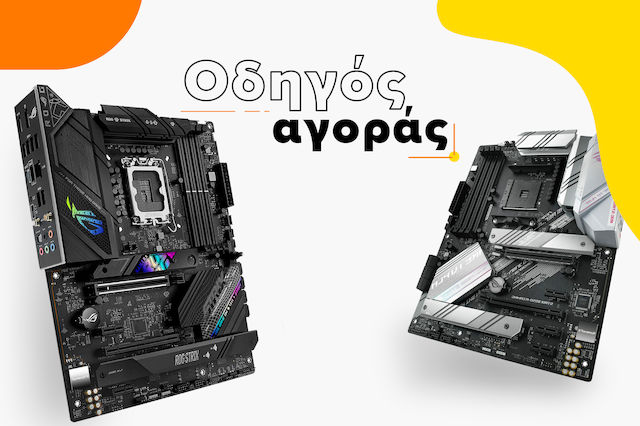How to choose the right Processor
What is CPU?
CPU is the central processing unit of a computer, which can be considered as the "brain" of the machine. It is responsible for executing the commands we give to the software and producing the results we see on the screen. In other words, the more powerful processor we have, the faster and more efficient our work and entertainment becomes.
There are many options for different uses. In this article, we will try to simplify the subject so that you can easily choose your next processor.
What are the most important elements of a processor?
1. The number of cores.
Each core is a processing unit that can execute one command at a time. The more cores a processor has, the faster and more efficiently it can handle multiple tasks simultaneously, such as opening multiple programs or tabs in a web browser, without compromising performance.
Do we all need multiple cores?
No. Processors with multiple cores are usually more expensive, so before purchasing one, it is good to consider the use of our computer. If, for example, you need a computer for everyday use such as browsing the internet, reading/sending emails, or editing text, then choosing more than 4 cores would be unnecessary. In other words, if you are experiencing low performance in such tasks, it would be better to invest in more RAM or an SSD rather than necessarily in a processor.

Processors for everyday use (AMD/INTEL)
Are you a Gamer?
If yes, then don't rush to reach deep into your pocket. Obviously, Gaming is much more demanding compared to everyday computer use, so naturally we will go for processors with more than 4 cores. However, in Gaming, the speed per core and the performance of the graphics card are more important than their quantity.
If simultaneous streaming is also part of the scenario, then you will need a processor that will make better use of multiple cores, so ideally you will need a processor with 8 cores or more. In general, for Gaming, an 8-core processor with high operating frequency is recommended so that you can keep it for a long time. Anything more than that would not necessarily contribute significantly to performance.
Pay attention here. In Gaming, and especially in demanding Gaming, the graphics card plays a very important role. It is common for a CPU to bottleneck the graphics card. For example, if you have an old or low-capacity processor and at the same time choose a new powerful graphics card, there is a high chance that this will happen, as simply put, the graphics card will run faster than the processor in calculations.
The result?
You will have paid for a graphics card that does not perform as it should because it is being held back by the processor.
Taking the above into consideration, the capacity of the graphics card should match that of the processor. Ideally, we would like the processor to be more powerful or at least of equivalent capacity to the graphics card. More specifically, and very roughly without any rule, a mid-range processor should be paired with a mid-range card, and a high-end processor should be paired with a corresponding high-end card if you want to approach almost 100% of the system's capabilities.

Are you a professional?
If you are involved in video editing and coding, architecture, 3D rendering, CAD, etc., then definitely a processor with multiple cores, ideally over 8, will be essential for you. The programs corresponding to these tasks take advantage of multiple cores and it is definitely worth investing in a multicore processor.
Processors for professional use (Intel/AMD)
2. Processor Speed.
The processor speed measures how quickly the CPU retrieves information from the RAM that your computer needs for a given task. A higher CPU speed usually helps load applications faster, while having more cores allows you to run multiple programs simultaneously and switch between them more easily.
If your budget is limited to have both multiple cores and high speed, try to answer two questions:
- Do you regularly load multiple software and run multiple programs simultaneously? Then you will need to have more cores and lower CPU speed.
- Do you want to play games or run programs that process large amounts of information at a fast pace? Then choose high CPU speed and fewer cores.
3. Processor Families
Depending on the number of cores they have, processors are divided into families, so that you can easily recognize them.
In addition to the following, there are also the Xeon, Threadripper, and Epyc families, which, however, are not intended for everyday users, as they are used for workstations and servers.
The table below analyzes the basic families, their number of cores, and the recommended use.
4. Architecture and Compatibility with the Motherboard.
In order to install and properly operate the processor on the motherboard, the socket of the motherboard needs to be compatible with the processor. Therefore, once you choose your processor, find a corresponding motherboard that will support it.
For example, the latest microarchitectures from Intel and AMD are Raptor Lake and ZEN 4, respectively. These specific architectures will be compatible with motherboards with Socket 1700 and AM5.
The architecture of the processor affects its performance. The most modern architectures usually offer better performance and efficiency. While the family of processors (Intel i3/i5/i7/i9 - AMD Ryzen 3/5/7/9) remains the same at the time of writing this article, what sets them apart is the architecture. In simple terms, an older microarchitecture i3 will be different from a newer i3.
5. Support for Integrated Graphics.
If you don't have a reason to invest in a separate graphics card, then processors with integrated graphics are the way to go. Integrated graphics are capable of everyday tasks, even light gaming, and their performance can even surpass a separate graphics card, especially in newer microarchitecture processors.
An essential requirement is for the motherboard to have a video output, which is likely to happen as most of them have this feature.

6. Overclocking
An unlocked processor gives you the ability to modify its settings in order to achieve higher performance or save power consumption while maintaining the same speeds. This process is called overclocking. All AMD processors are unlocked, while Intel processors are recognized by the letter K in their model name.
However, as mentioned earlier, in order for your processor to function, it needs to be compatible with the motherboard. The same applies to the ability to overclock, as if your motherboard does not support it, you will have purchased an unlocked processor unnecessarily. However, be careful not to attempt overclocking if you do not have the proper knowledge!
Why overclock?
Overclocking your computer can contribute to extending the life of a system, allowing it to keep up with increasingly demanding software. Each CPU has a predetermined number of cores. Therefore, a quad-core processor will not become a six-core processor.
However, the speed of each core is adjustable. Each individual processor is different, and optimizing yours can unlock its capabilities for performance beyond factory settings. The minimum system requirements for triple-A game titles tend to become more demanding over time. As your computer ages, it will eventually struggle to meet these increasing standards.
Even if your next computer is powerful enough to handle today's most demanding games, purchasing a system with overclocking capabilities ensures that you can extend its life later on.
In the past, overclocking was a complex process that was intimidating. Nowadays, motherboard manufacturers have incorporated software that allows you to easily give your system the extra power it needs with just a click.
Skroutz Tip: Unlocked Intel processors require a motherboard with a chipset that has the initial letter Z, while AMD processors require a chipset of type B or X.

7. Coolers
When using your processor for demanding tasks, its temperature increases. In order to enjoy it for a long time, you should always have a reliable cooler, so that it does not exceed the permissible temperatures. If you are also involved in overclocking, as mentioned above, then a separate cooler or liquid cooling is definitely required.
In case you do not want to spend extra money, a large number of processors come with a cooler. On the other hand, if you want to buy it separately, in order to add LED or ask for something more demanding in terms of performance, this Cooler Buying Guide is for you.
8. AMD or Intel?
We will not discuss entry-level models as the differences there are not particularly significant.
If you are looking for the fastest overall chips on the market at an affordable price, the Intel Raptor Lake 13th-Gen CPUs are a good choice. The series is based on Intel's hybrid architecture, which combines high-performance and efficiency cores in one package, to provide an efficient combination for demanding tasks as well as gaming, but this comes at the cost of higher power consumption compared to AMD's competitive chips.
However, AMD's powerful Ryzen 7000 "X3D" models use innovative 3D chip-stacking technology to gain an advantage in gaming performance.
Intel chips also maintain top-notch overclocking capabilities for both core frequencies and memory frequencies. If you invest in an Intel Z-series motherboard, you will have much more room for overclocking than you would with Ryzen 7000 chips.
AMD still allows free overclocking on all its models and all its motherboards except for the A-series. On the other hand, Intel continues to charge extra for its K-series chips with overclocking capability, but you will also need to pay for an expensive Z-series motherboard for this privilege. Intel does not allow full overclocking on B and H motherboards, but it has enabled memory overclocking on the B560 and H570 chipsets.
In addition, AMD has significantly better integrated graphics compared to Intel.
In simple terms, Intel currently offers better performance but at a higher cost and higher power consumption. On the other hand, AMD does not change sockets as frequently, so you usually don't need to change the motherboard when upgrading the processor, which is not the case with Intel.
As for gaming, excluding benchmarks that often rely on numbers without being able to perceive differences in real-world conditions, there is no clear winner.
AMD seems to have the advantage in terms of temperature and power consumption. Finally, in terms of cost, generally speaking, a powerful Intel system appears to be more expensive compared to AMD.
Closing
Whether your goal is gaming, video editing, or simply everyday use, at Skroutz you can find the perfect processor for all your needs.













Be the first to leave a comment!